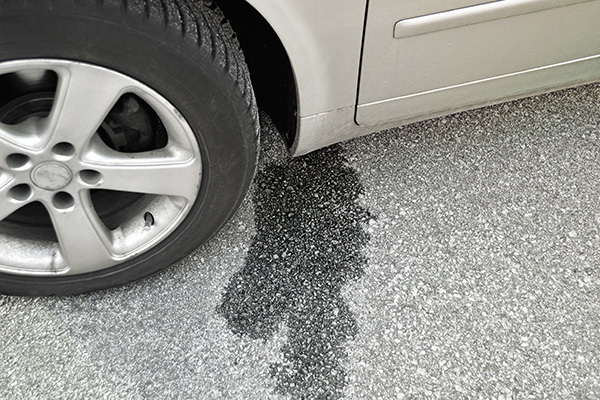
A small stain under your car might not seem like a big deal—until it turns out to be transmission fluid. Transmission oil leaks are one of those problems that can start out quietly but quickly turn into something much more serious if left unchecked. Knowing what to look for and when to take action can help you avoid costly repairs and protect one of your vehicle’s most complex systems.
If you’ve spotted fluid in the driveway or noticed shifting issues, here’s how to tell if your transmission leak needs immediate attention.
What Does Transmission Fluid Look Like
Transmission fluid is usually red or pink when it’s fresh. Over time, it darkens and can appear reddish-brown. If you spot a puddle or drip that matches this description—especially near the center or rear of your vehicle—it’s a sign to take a closer look.
Transmission oil has a slightly sweet or petroleum-like smell and a slick texture. Don’t confuse it with engine oil (typically darker and located near the front of the car) or coolant (which is often green, orange, or pink and has a watery feel).
Common Signs of a Serious Transmission Leak
Not all leaks are equal. Here are a few signs that the leak might be more than just a small nuisance:
- Low fluid levels: If you’re regularly topping off the fluid or the dipstick shows it’s running low, the leak is ongoing—and worsening. Low fluid can cause the transmission to overheat or slip.
- Delayed shifting or gear slippage: A noticeable delay when shifting from park to drive or gears that seem to slip under acceleration could mean the fluid is too low to maintain proper pressure.
- Burning smell: If the fluid is leaking onto hot components like the exhaust or transmission housing, you may smell something burning while driving.
- Warning lights or error codes: Many modern vehicles monitor transmission performance. If a warning light pops up on your dash—or if the check engine light comes on alongside shifting issues—it’s time to get it checked.
- Puddle size is increasing: A few drops overnight can turn into a larger puddle within days. That change often means the source of the leak is getting worse.
Where Do Transmission Leaks Come From
Transmission fluid can leak from several locations. Some of the most common include:
- Pan gasket: This gasket seals the bottom of the transmission pan. Over time, it can dry out, crack, or wear down, especially if it was overtightened during a service.
- Transmission cooler lines: These metal or rubber lines carry transmission fluid to and from the radiator. They can corrode or crack, especially in older vehicles or those exposed to rough roads.
- Input/output shaft seals: These seals are located where the transmission connects to the engine or driveshaft. They often wear out over time, especially in higher-mileage vehicles.
- Torque converter: Though less common, leaks from the torque converter can be more difficult to diagnose since the fluid may be leaking internally.
A proper inspection can help pinpoint the exact source and determine whether it's a simple fix or something more involved.
How Quickly Should You Act
If you’ve spotted a leak but haven’t noticed any driving symptoms yet, it’s still worth scheduling a visit. Even slow leaks can cause long-term damage if they go on for too long. Transmission repairs aren’t just expensive—they can also leave you without a vehicle for several days if major components are involved.
Catching a small gasket or seal leak early is almost always more affordable than waiting until the fluid runs low and the transmission begins to slip or overheat.
What Happens If You Ignore It
Continuing to drive with a transmission leak puts the entire system at risk. Without enough fluid, the internal gears and clutch packs won’t be properly lubricated or cooled. This leads to excessive friction, heat, and, eventually, part failure. If the fluid level drops too far, the transmission may enter a fail-safe mode or stop working altogether.
Even if the leak seems minor, the risk of doing internal damage far outweighs the cost of an early inspection or gasket replacement.
Transmission Hero – Transmission Leak Repair in Orange Park, FL
At Transmission Hero in Orange Park, FL, we specialize in identifying and repairing transmission leaks before they turn into major failures. Whether you’ve spotted a fresh puddle or just want peace of mind, our team can run a full inspection and let you know exactly what’s going on. Book your visit today and protect your transmission from unnecessary wear.